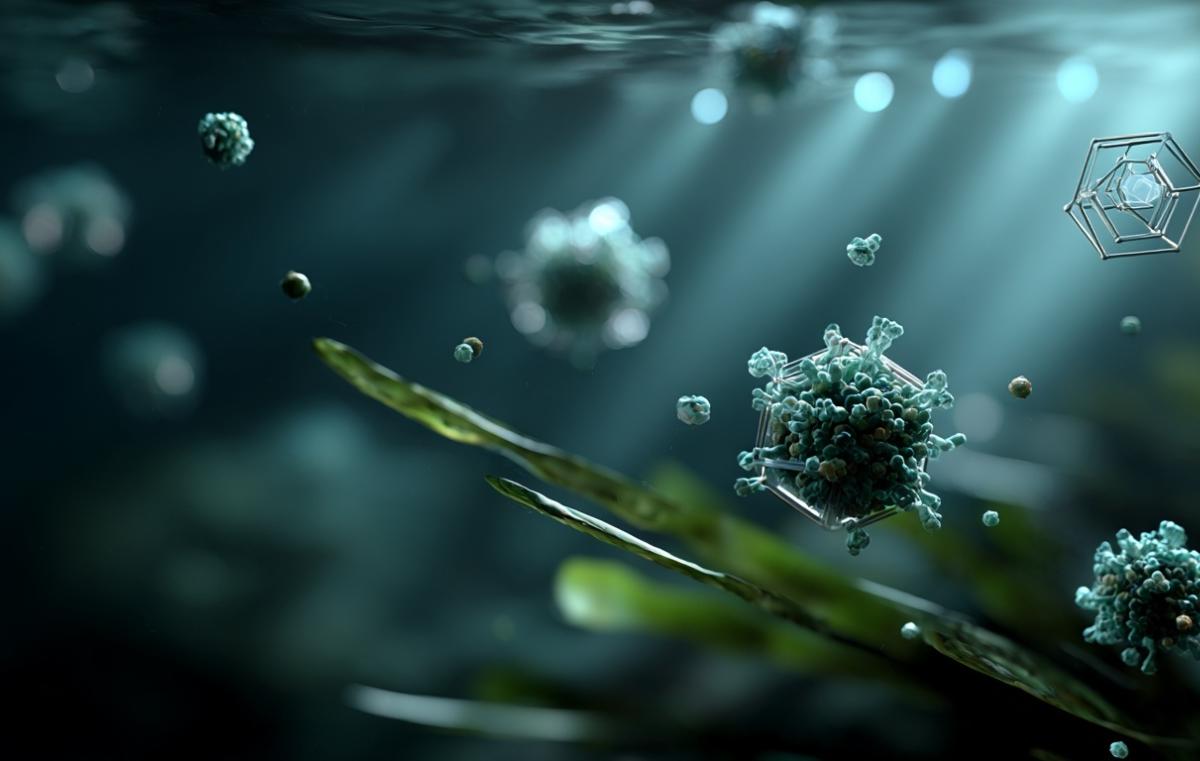Not All Ocean Viruses Are Created Equal
New research reveals RNA viruses make it harder for oceans to recycle carbon, offering new insight into Earth’s climate regulation

A new study from Bar-Ilan University, in collaboration with Rutgers University, has shed light on a surprising and little-known player in the global carbon cycle: RNA viruses in the ocean.
Published in Science Advances, the research reveals that RNA viruses may interfere with the ocean’s ability to recycle carbon and nutrients—potentially influencing how much carbon remains trapped in the deep sea and how much reenters the atmosphere. These insights add a new layer of complexity to our understanding of climate regulation.
Phytoplankton: Tiny Organisms, Global Impact
The study focuses on microscopic algae called phytoplankton—tiny but mighty organisms that not only produce a significant portion of the Earth’s oxygen but also pull large amounts of carbon dioxide out of the atmosphere. When infected by viruses, phytoplankton die and release dissolved organic matter (DOM) into the surrounding water. This DOM becomes fuel for marine bacteria, helping drive one of the planet’s most important recycling systems.
RNA vs. DNA Viruses: A Critical Difference
But the researchers found that not all viruses affect this system equally.
By comparing how DNA and RNA viruses infect a common phytoplankton species, they discovered a striking difference: DOM released from cells infected by DNA viruses supports bacterial growth and carbon recycling. In contrast, DOM from RNA virus infections is more difficult for bacteria to break down, requiring more energy and offering less nutritional value. As a result, recycling slows—and more organic carbon may sink to the ocean’s depths, where it can remain sequestered for longer periods.
New Insights into Climate Regulation
“Viruses don’t just kill phytoplankton; they fundamentally alter the way carbon moves through the ocean,” said Dr. Chana Kranzler of Bar-Ilan University’s Goodman Faculty of Life Sciences, who led the study and won the prestigious Krill Prize for her discovry. “We are learning that distinct types of viral infections can impact surrounding microbial communities in different ways, potentially reshaping how carbon is recycled and the amount of carbon that is ultimately sequestered in the deep ocean.”
What’s Next?
Given that every drop of seawater contains millions of viruses, the implications are vast. While both DNA and RNA viruses are widespread, their ecological roles—and their impact on the carbon cycle—are still being uncovered.
This research opens new paths for scientists seeking to understand the subtle, powerful interactions between marine life and Earth’s climate systems. As the planet grapples with rising levels of atmospheric carbon, uncovering the mechanisms behind natural carbon storage has never been more urgent.